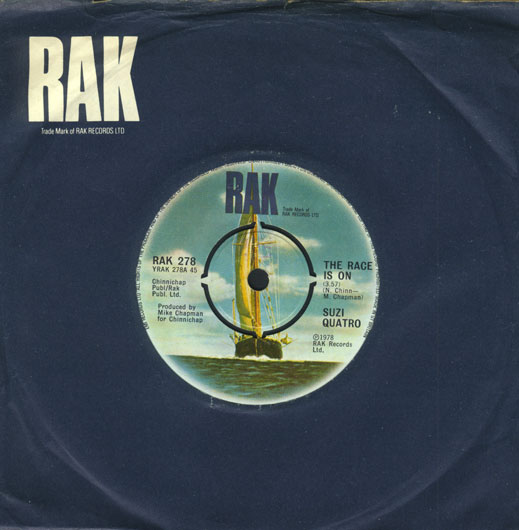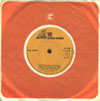|
 -
company sleeves from the 50's to the 80's -
company sleeves from the 50's to the 80's
Click on the images to see a larger version. My comments are bound to be incorrect in places, so please send me
corrections or more info if that's the case. Keep checking back regularly for updates and more scans.
Please do not directly link to these images for your own pages; it won't work.
You require my advance permission to use them; please contact me to make arrangements. The artwork remains copyright of the record company.
Page 7 (Pye to Reprise)
(Previous page) (Back to index) (Next page)
Pye
Another one of those labels that was started by a TV/radio company, the Pye label first appeared in 1955 when Nixa (once Decca's only rival in the LP market) and Polygon Records were combined by the Pye Company. Early hits came courtesy of skiffle legend Lonnie Donegan, followed by plenty of successes from The Kinks, Donovan, The Foundations and The Searchers. Another Pye stalwart was Petula Clark: her Dad Leslie had originally set up Polygon to keep close guard of his daughters' record revenues! Having been sold to ATV in 1966, Pye kept going through the 70s with pop and disco releases, but in 1980 the rights to use the 'Pye' name expired: the label then became PRT Records. .jpg) .jpg) | | The standard Pye sleeve during the late 50s and early 60s, this purple design proudly invites you to "Spin With The Stars". |
.jpg) .jpg) | | From 1962 until 1965, this concentric circles pattern was seen on Pye sleeves, using a plain pink label with large Pye logo on the left. |
.jpg) .jpg) | | Around 1965, the Pye group started using the same sleeve with slanted text for their Pye, Piccadilly, Pye International and Pye Jazz labels. However, the centre label retains some individiuality - the Pye logo is displayed top-middle. |
.jpg) .jpg) | | 1968, and Pye finally moves away from pinks to blues. The round Pye logo has gone, too. |
Pye International
Decca had London, EMI had Stateside, Pye had Pye International - an outlet for American hits. But there was a difference: many of the US songs were released under the names of their original labels (Chess, Kama Sutra and A&M, for example), so there aren't as many singles found under the Pye International name. Clarence "Frogman" Henry and Chuck Berry were two of the label's bigger names. .jpg) .jpg) | | A fantastic space-age design, this is the earliest Pye International sleeve, used from the label's launch in 1958 through to the mid 60s. |
RAK
Mickie Most was one of the UK's most succesful record producers through the 1960s and 70s. Having worked on hits for The Animals, Herman's Hermits, Donovan, Brenda Lee and many others, he started RAK Records in 1969 to have more control over his performers. With UK distribution through EMI, the label was hugely succesful through the 70s: Hot Chocolate, Suzi Quatro, Mud and Smokie were some of the big acts who released singles on RAK. The success of the label owed a great deal not only to Most's production skills, but also to those of Nicky Chinn and Mike Chapman, who together wrote and produced many of the label's later releases. EMI bought the label and its recordings in 1983, but Most retained the publishing rights and the RAK studios in St John's Wood.   | | Here is the basic RAK sleeve. There are in fact two slight variations: the shade of blue darkened as the 70s progressed. The centre label features the RAK logo of a sailing ship - but I have never been able to find out the significance of this. If you know why this design was used for RAK, please get in touch! |
RCA
RCA were a large American equipment manufacturer (part owned by General Electric) and are of key note here for being instrumental in the development of the 45rpm record. They purchased the Victor Talking Machine company in 1929, earning the rights to use Nipper the dog as their logo in the USA - but not in the UK (EMI's HMV had that priviledge), which is why their sleeve designs are canine-free. Far and away the most notable artist released on RCA in the UK was Elvis Presley, closely followed in the 70s by David Bowie, plus Perry Como, The Monkees, The Mamas & The Papas and Jim Reeves. .jpg) .jpg) | | The original RCA design was this bold red and white pattern; another sleeve influenced by cosmic themes. 78rpm records of the time were also released in the same bag. |
.jpg) .jpg) | | At the start of 1963, the switch was made to putting the full RCA Victor name on the centre label, but not on the sleeve, which retained the old RCA logo. The colour shifted slightly, too, becoming less bold and more pink. |
.jpg) .jpg) | | Around 1969, there was a major change in label design with the introduction of the green and white bands. Note that the Victor name still only appears on the label and not on the sleeve. (Paul Vigrass went on to co-write 'Forever Autumn' for Jeff Wayne's version of 'War Of The Worlds', amongst other things.) |
.jpg) .jpg) | | Around 1976, this swirly blue and orange sleeve was introduced; cleverly blending the orange centre label (which is pretty much unchanged from the previous sleeve; just a slightly deeper hue) with the outer sleeve design. |
Reprise
When Frank Sinatra wanted more freedom with his recordings, he founded his own record label: and so Reprise came into being in 1960. Joined by Dean Martin, Sammy Davis Jr and his daughter, Nancy, the Reprise roster steadily grew. In the 70s, Emmylou Harris and Fleetwood Mac made it their home, and under the Warner Music umbrella (who bought the label in 1963), it is flourishing.   | | Here's one of the many variants of the Reprise sleeve (the only constant being the 'r' logo). This is a typical Warner group design from the first half of the 70s: white border, solid colour sleeve, single logo top middle. |
(Previous page) (Back to index) (Next page)
|






.jpg)
.jpg)
.jpg)
.jpg)
.jpg)
.jpg)
.jpg)
.jpg)
.jpg)
.jpg)


.jpg)
.jpg)
.jpg)
.jpg)
.jpg)
.jpg)
.jpg)
.jpg)

